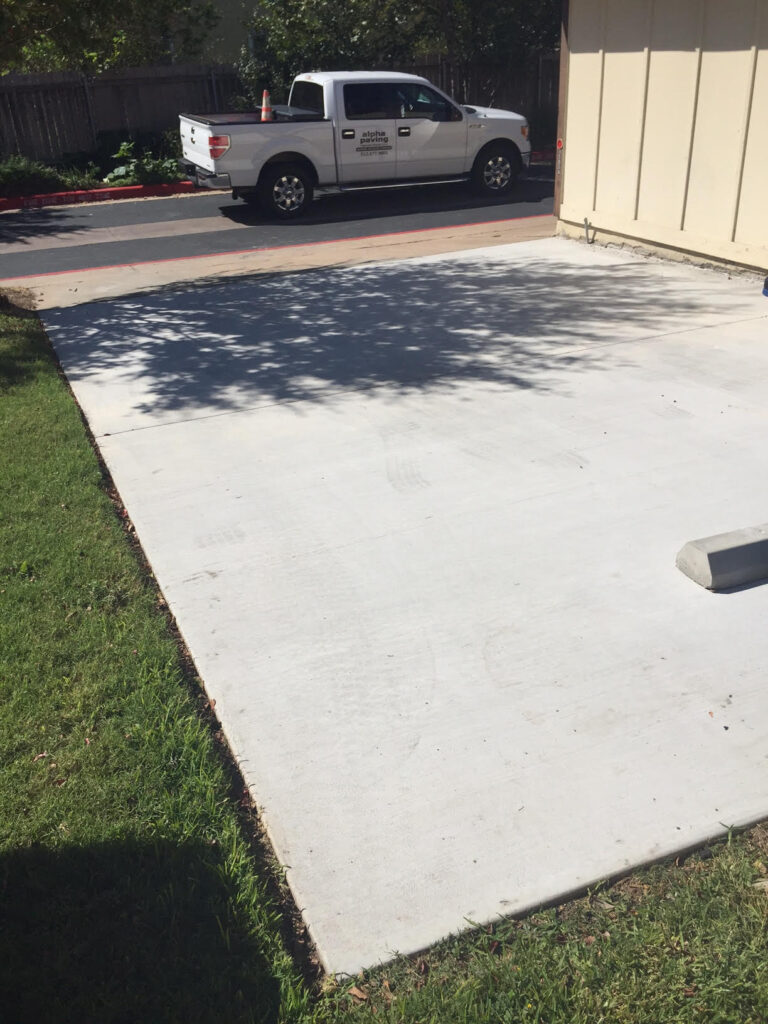 Reinforced concrete has become a popular material for many types of construction. However, the debate is still raging over the need to reinforce concrete when it is used for slabs placed on the ground. To understand why there is a difference of opinion, it might be helpful to first discuss the properties of concrete and the types of reinforcement systems available.
Reinforced concrete has become a popular material for many types of construction. However, the debate is still raging over the need to reinforce concrete when it is used for slabs placed on the ground. To understand why there is a difference of opinion, it might be helpful to first discuss the properties of concrete and the types of reinforcement systems available.
Concrete Installation: When Is Reinforcement Needed?
What Are the Properties of Concrete?
Concrete contains crushed rock and sand, and these aggregates help concrete slabs resist damage caused by compression. However, concrete’s tensile strength is only about one-tenth of its compressive strength. In virtually all cases, breaks and cracks are caused by a failure of the concrete’s tensile strength. Most of the time, systems used to reinforce concrete are aimed at improving the slab’s tensile strength.
What Reinforcement Systems Are Available?
The most common reinforcement systems rely on rebar and/or reinforcing mesh. When incorporated into a concrete slab, these additions help distribute the tensile weight more evenly. Another method of reinforcing concrete is to add steel fibers to the mix.
How Effective Are the Reinforcement Systems?
As a rule, reinforcement systems do not increase the ability of the slab to support heavier loads or prevent cracks from forming. They can, however, keep the cracks tighter and can often prevent spalling. In many cases, reinforcement measures are not as effective as ensuring a consistent slab thickness, spacing the joints properly, using a mix designed for low shrinkage, inserting dowels at the joints and having good base control.
What Are Some Examples of Applications Requiring Reinforcement?
If a slab is installed on a subbase that is of high quality and that offers uniform support, it is usually not necessary to reinforce the concrete. However, if the subbase is problematic or the spacings of the joints are greater than 15 feet, reinforcement should be used. If contraction joints are not installed — such as when the customer desires an uninterrupted concrete floor — the slab will need to be reinforced. Concrete slabs that will support heavy loads, including pillars or footings, should be reinforced. Concrete slabs will also need to be reinforced if local building codes mandate the use of reinforced concrete.
Where Is Rebar Positioned Within the Slab?
Whether the rebar is placed near the bottom, middle or top of the slab depends on the eventual use of the slab, the size of rebar used and the distance between joints. Therefore, your contractor will be the best person to answer any questions you might have on the placement of rebar.
Where to Find Additional Help
Alpha Paving is an asphalt paving and concrete contractor that offers a full line of concrete-related services, including concrete driveways, concrete parking lots, concrete ramps, concrete sidewalks and concrete curbs. We are a highly respected company serving Austin and most of Central Texas and have built our reputation on the quality of our work, our professionalism and our exceptional customer service. We often furnish airports, municipalities, subdivisions, HOAs, churches, educational institutions, retailers, manufacturing facilities, hotels, restaurants, office parks, apartment complexes and health care facilities with paving-related services. In addition to concrete work, we also offer asphalt paving, asphalt resurfacing, road construction, sealcoating, parking lot striping, asphalt milling, street maintenance, speed bumps, car stops and parking lot signs. If you need exceptional results at competitive prices, contact Alpha for a free estimate by submitting the quote request form online or calling (512) 677-9001.




